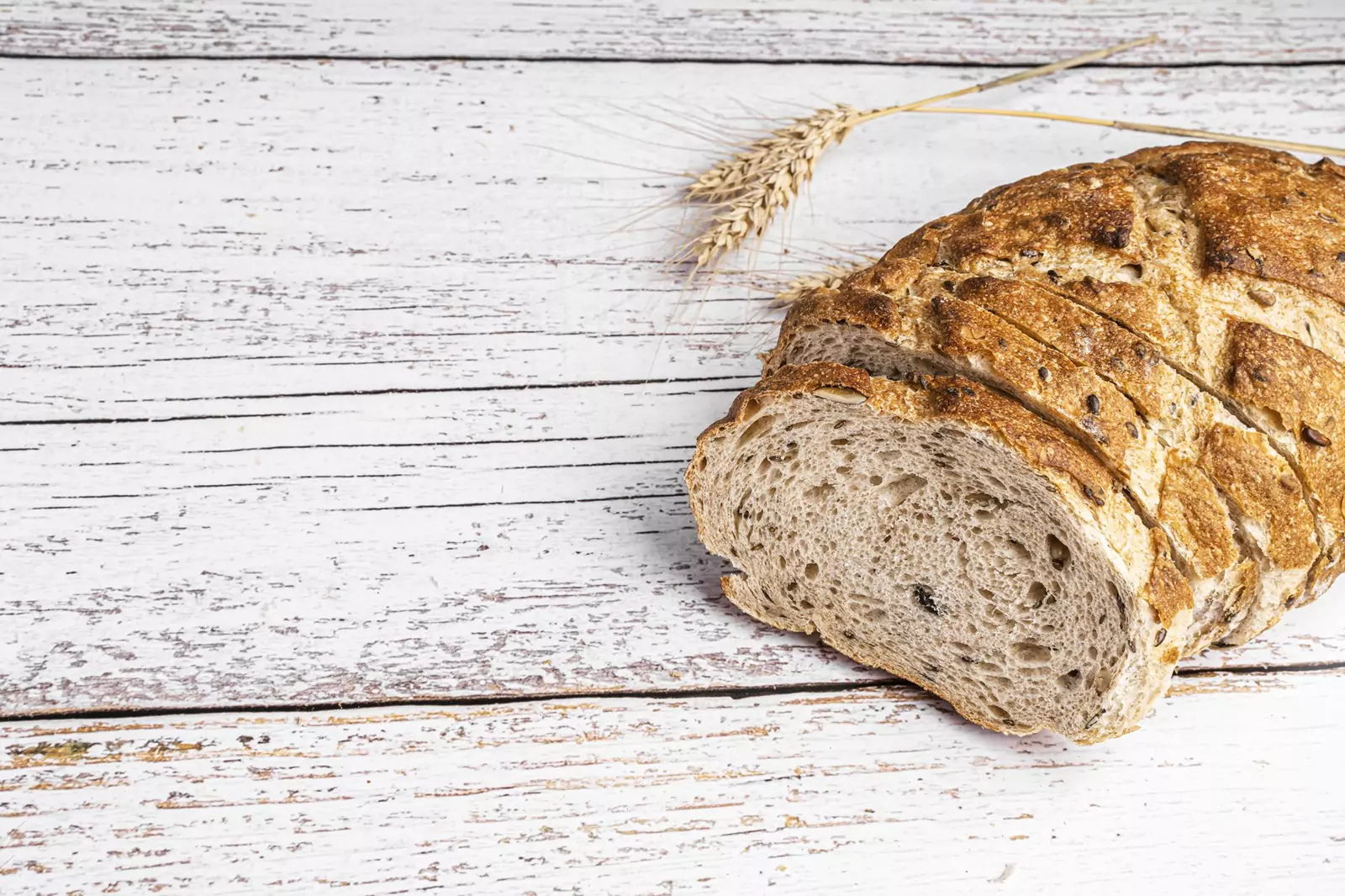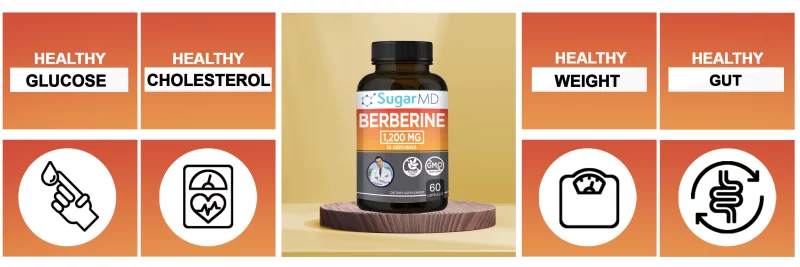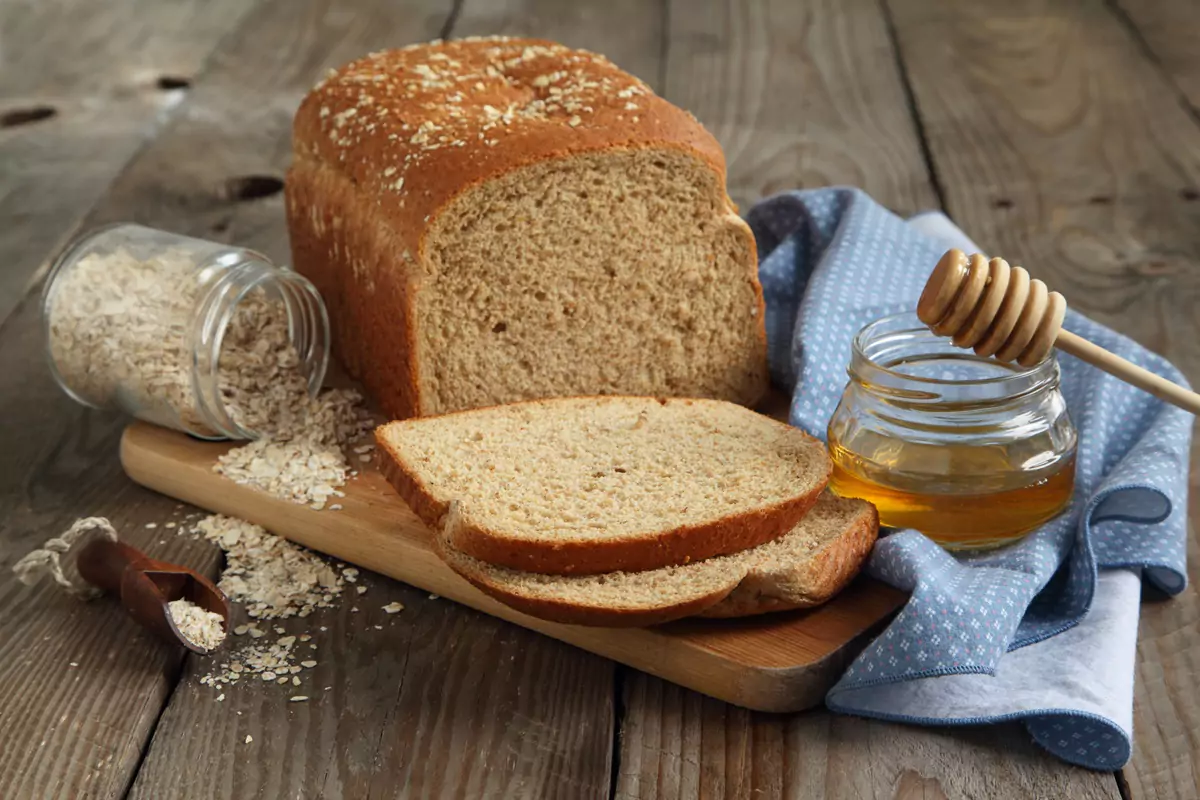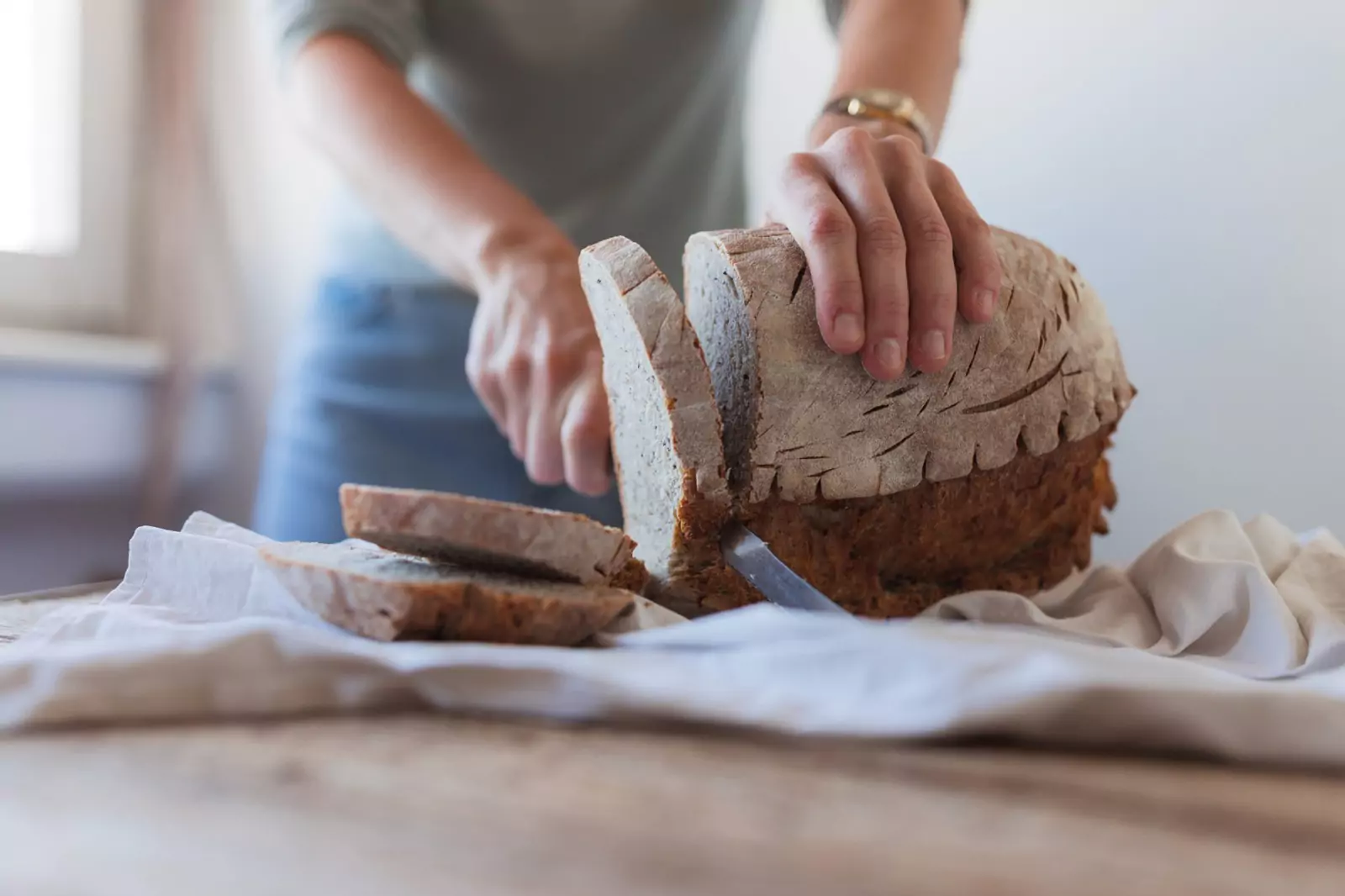





Bread Recipes for Diabetics: Guide to Diabetic-Friendly Breads


Table of Contents
- The Science Behind Bread and Diabetes
- How Different Breads Affect Blood Sugar
- Beware of Added Sugars
- The Importance of Vigilance for Diabetics
- Bread Recipes For Diabetics
- Banana Bread Recipe for Diabetics
- Diabetic Pumpkin Bread
- Corn Bread for Diabetics
- Is Pita Bread Healthy for Diabetics?
- Pita Bread vs. White Bread
- Pita Bread and Type 2 Diabetes
- Making Your Own Pita Bread at Home
- Is Raisin Bread Good for Diabetics?
- Raisin Bread and Blood Sugar
- Healthy Alternatives to Raisin Bread
- The Role of Supplements in Managing Diabetes
- How It Helps in Maintaining Glucose Metabolism
- Reducing Inflammation
- Conclusion
- About The Author
So, you've been diagnosed with diabetes: can you still enjoy bread? The good news is that you can still enjoy bread even if you've been diagnosed with diabetes. However, not all bread is created equal, particularly when managing your blood sugar levels is a concern. In this comprehensive guide, we'll delve into the science behind how different types of bread affect your blood sugar and offer delicious, bread recipes for diabetics you can make at home. Choosing the appropriate bread is crucial for anyone managing diabetes.
A wrong choice can trigger a spike in blood sugar, while the right one can offer essential nutrients without causing harm. This article explores a variety of bread options, ranging from banana bread to cornbread and even tackles controversial choices like pita and raisin bread. Additionally, we'll introduce you to supplements that can assist in maintaining healthy glucose levels. So, let's embark on this in-depth journey into the world of diabetic-friendly bread recipes!
The Science Behind Bread and Diabetes
Firstly, let's address the glycemic index (GI), a numerical scale that categorizes carbohydrates based on how quickly they raise blood sugar levels. High-GI foods like white bread are rapidly digested and absorbed, leading to quick spikes in blood sugar. In contrast, low-GI foods such as whole-grain bread are digested more slowly, causing a gradual rise in blood sugar levels.
How Different Breads Affect Blood Sugar
Not all breads are made the same. For example, white bread, prepared from refined flour, has a high GI and can lead to rapid blood sugar spikes. These spikes are concerning because they can contribute to increased insulin resistance, a significant factor in type 2 diabetes. Conversely, wheat and whole-grain breads are better options as they generally have a lower GI due to their higher fiber content. However, even within the category of "healthy" breads there are variations, especially concerning added sugars and fiber content.
Beware of Added Sugars
Added sugars can turn a seemingly healthy choice into a potential problem. A loaf labeled as "whole grain" or "high fiber" may still have a high GI if it contains added sugars. Specialty breads with ingredients like chocolate chips or dried fruits may taste great but are not optimal for people managing diabetes.
The Importance of Vigilance for Diabetics
Why is this topic so important? If you have diabetes, you need to be extra cautious when managing your blood sugar. Consistently elevated blood sugar levels can result in various complications, including nerve damage and cardiovascular issues. While supplements like SugarMD Super Berberine can assist in blood sugar management they are not a replacement for a well-balanced diet. Always read labels carefully, steer clear of added sugars and opt for breads with a low GI.
Bread Recipes For Diabetics
Banana Bread Recipe for Diabetics
To create a diabetic-friendly banana bread, you'll need specific ingredients like ripe bananas, almond flour, baking powder and a sugar substitute such as stevia. Optionally, you can include sugar-free chocolate chips. These ingredients are selected with care: ripe bananas offer natural sweetness, eliminating the need for added sugars, while almond flour and baking powder have a low glycemic index, making them suitable for people with diabetes.
How to Make Sugar-Free Banana Bread
Eager to start baking? Begin by preheating your oven to 350°F (175°C). As it heats up, mash the ripe bananas in a separate bowl. In another bowl, combine the almond flour, baking powder and stevia. Mix the wet and dry ingredients together and if you're using chocolate chips, fold them in at this stage. Once mixed, pour the batter into a greased loaf pan and bake for about 45-50 minutes. Congratulations, you've successfully baked a loaf of sugar-free, diabetic-friendly banana bread!
The Advantages of Using Almond Flour
You might be asking, "Why opt for almond flour over traditional white flour?" It's a valid question. Almond flour is not only lower in carbohydrates but also has a lower glycemic index, making it a better choice for blood sugar management. It's rich in nutrients like magnesium and vitamin E. Additionally, almond flour is gluten-free, catering to those with gluten sensitivities. So, almond flour emerges as a versatile ingredient that is low-carb, nutrient-rich and gluten-free.
Why Choose Sugar-Free Banana Bread?
So, why opt for sugar-free banana bread? Firstly, it's a significant advantage for managing your blood sugar levels. Traditional banana bread recipes for diabetics are heavy on sugar which can wreak havoc on your blood sugar. Using a sugar substitute like stevia and relying on the natural sweetness from ripe bananas keeps your blood sugar more stable.
Moreover the inclusion of almond flour and baking powder aids in maintaining blood sugar balance. The psychological benefits are also noteworthy. Being able to indulge in a slice of banana bread without worrying about blood sugar spikes can be a liberating experience.
Diabetic Pumpkin Bread
As the season changes and pumpkin-flavored treats come into vogue, you might wonder if pumpkin bread can fit into a diabetic-friendly diet. The good news is that it can! The secret lies in using ingredients with a low glycemic index.
In place of white flour and excessive sugar, diabetic-friendly pumpkin bread recipes for diabetics generally use almond flour and sugar substitutes like stevia. Plus, pumpkin itself is a low-glycemic vegetable, offering fiber and helping to stabilize blood sugar.
Ingredients and Alternatives
To make a batch of diabetic-friendly pumpkin bread, you'll need pure canned pumpkin (not pie filling), almond flour, baking powder, a sugar substitute like stevia and spices such as cinnamon and nutmeg. Want to jazz it up? Sugar-free chocolate chips or nuts can add a welcome crunch. If almond flour isn't to your liking, coconut flour is another low-carb, high-fiber option. Not a fan of stevia? Monk fruit sweetener is an excellent substitute that doesn't cause blood sugar spikes.
Baking Tips and Techniques
Ready to bake? Preheat your oven to 350°F (175°C). While the oven warms up, mix your dry and wet ingredients in separate bowls. Combine the two carefully; overmixing can result in dense bread. After greasing a loaf pan, pour in your batter.
To ensure an even bake, tap the pan on the counter a couple of times to release any trapped air bubbles. Bake for around 50-60 minutes but be mindful of your oven's quirks—ovens can vary, so monitor your bread to avoid overbaking.
Proper Storage Methods
After your kitchen fills with the delightful aroma of freshly baked, diabetic-friendly pumpkin bread, storage is the next step. For short-term enjoyment, wrap the bread in plastic and store at room temperature for a couple of days. If you're planning for longer storage, slice the bread and freeze individual portions. This allows for easy portion control and reduces waste, both of which are particularly useful for managing blood sugar levels.
Corn Bread for Diabetics
Cornbread holds a special place in the realm of comfort food but its carb content can be a concern for those managing diabetes. The solution? A low-carb corn bread recipes for diabetics that uses almond flour and a small quantity of whole-grain cornmeal instead of traditional, high-carb ingredients.
Baking powder gives it the lift you want and a sugar substitute like stevia makes it sweet without spiking your blood sugar. To ramp up the flavor, consider adding herbs such as rosemary or thyme. The result is a cornbread that satisfies your craving without causing blood sugar worries.
Why Use Baking Powder?
Wondering about the role of baking powder? It's more than just a leavening agent that makes your cornbread rise. It's crucial for improving the bread's texture, particularly when you're using almond flour which is denser than white flour. Baking powder also helps evenly distribute heat during the baking process, ensuring your cornbread cooks thoroughly without drying out. It contributes to the overall quality, making your low-carb cornbread both fluffy and delicious.
The Importance of High Fiber
Fiber plays a critical role when you're crafting a diabetic-friendly meal. While traditional cornbread recipes may call for low-fiber white flour and regular cornmeal, this recipe's use of almond flour and whole-grain cornmeal increases the fiber content significantly. For people with diabetes, fiber is a blessing—it slows down the absorption of sugar, thus helping to maintain stable blood sugar levels. Fiber also aids in digestion and can make you feel full faster, aiding in portion control.
How to Enjoy Cornbread Safely
Baking is only half the battle; consuming your low-carb cornbread responsibly is equally important. Keep an eye on portion sizes; even foods made from bread recipes for diabetics can affect your blood sugar if eaten in excess. Choose your pairings wisely.
Accompany your cornbread with low-glycemic options like a leafy green salad or grilled veggies. Steer clear of high-sugar sauces or condiments that could undermine the benefits of your low-carb bake. Monitoring your blood sugar levels after meals will also give you valuable insight into how different foods and recipes impact your diabetes management.
Is Pita Bread Healthy for Diabetics?
Pita bread hails from the Middle East and is a versatile flatbread often used for sandwiches, wraps and as an accompaniment to dips like hummus. It's typically made from a straightforward dough containing wheat flour, water, yeast and salt then baked at high temperatures to achieve its unique pocket-like structure. While delicious and versatile, its compatibility with a diabetic-friendly diet requires some consideration.
Pita Bread vs. White Bread
Comparing pita bread to the more ubiquitous white bread reveals some differences and similarities. Both are primarily made from wheat flour but pita bread generally has fewer added sugars and preservatives which slightly nudges it ahead in terms of healthfulness. However, pita bread is often denser, meaning it can pack more calories and carbohydrates per serving. So while it may be marginally better than white bread, it's not a carte blanche to indulge.
Pita Bread and Type 2 Diabetes
When considering pita bread in the context of type 2 diabetes, it's a mixed bag. Pita bread typically has a moderate glycemic index, meaning it won't rapidly spike your blood sugar as white bread might. However, its density and carb content mean you'll need to be mindful of portion sizes and pairing choices. Consuming pita bread in moderation and filling it with low-glycemic options like vegetables or lean proteins can make it a more viable choice.
Making Your Own Pita Bread at Home
For those concerned about the possible impact of store-bought pita on blood sugar levels, making your own at home is a great alternative. This allows you to control the ingredients fully. You can opt for whole-grain flour or even almond flour to bring down the carbohydrate content.
Omitting added sugars and preservatives gives you a cleaner, more diabetic-friendly bread. Homemade pita also has the advantage of letting you know exactly what you're eating—an invaluable benefit when managing a health condition like diabetes.
Is Raisin Bread Good for Diabetics?
Raisin bread is indeed a subject of controversy within diabetic circles. While tasty and loved by many, its higher sugar content—both from the natural sugars in raisins and often from added sugars in the recipe—makes it a questionable choice for those watching their blood sugar levels.
Raisin Bread and Blood Sugar
Raisins are dried grapes and as such they pack a concentrated sugar punch. Adding them to bread significantly ups the bread's sugar content, making it less friendly for blood sugar management.
Even opting for a whole-grain version doesn't entirely negate the effect of the sugar from the raisins and any additional sweeteners in the bread. Therefore, despite its seemingly wholesome ingredients like fruit and whole grains, traditional raisin bread isn't the best choice for blood sugar control.
Healthy Alternatives to Raisin Bread
The good news is there are ways to satisfy your raisin bread craving in a more blood sugar-friendly way. One approach is to make it yourself at home using ingredients that are lower in carbs, such as almond flour and sweetening it with stevia or another low-glycemic sweetener.
For those who aren't into baking there are commercial bread options available specifically designed for those with diabetes. These typically have fewer carbs and added sugars, making them more suitable for maintaining steady blood sugar levels. Additionally, opting for high-fiber breads can help counterbalance the impact of the sugars on blood sugar, as fiber slows the absorption of sugar into the bloodstream.
While the traditional form of raisin bread may not be the most diabetes-friendly, that doesn't mean you have to give it up entirely. By making mindful choices about ingredients and serving size, you can still enjoy this beloved treat. Monitoring your blood sugar response after indulging can provide valuable information for future food choices, helping you manage your condition more effectively.
The Role of Supplements in Managing Diabetes
Managing diabetes often involves a multi-pronged approach that includes diet and exercise. However, supplements like SugarMD Super Berberine offer an additional tool in the fight against this condition. Designed with glucose metabolism and inflammation reduction in mind, this supplement combines dihydroberberine and 100% pure Ceylon Cinnamon for a comprehensive approach to maintaining healthy glucose levels.

How It Helps in Maintaining Glucose Metabolism
The key ingredient, dihydroberberine, works by enhancing insulin sensitivity. This is particularly important for people with type 2 diabetes, who often suffer from insulin resistance. Better insulin sensitivity allows the body to use insulin more effectively, helping to maintain stable blood sugar levels.
The inclusion of Ceylon cinnamon further bolsters the formula, as it has been studied for its potential in improving insulin function and lowering blood sugar. Together these ingredients aim to offer a solution that is not just a temporary fix but a more sustainable method for blood sugar management.
Reducing Inflammation
The benefits of SugarMD Super Berberine go beyond blood sugar control; it also addresses inflammation. Chronic inflammation is linked to various health complications, including diabetes. Dihydroberberine has anti-inflammatory properties that can help tackle this issue.
Reducing inflammation not only helps manage symptoms but also targets one of the underlying causes of diabetes—making this supplement a potentially beneficial addition to a diabetes management plan. While SugarMD Super Berberine should not replace a balanced diet and regular exercise, it could be a valuable adjunct to your overall diabetes strategy.
It's always best to consult your healthcare provider before incorporating any new supplement into your regimen, especially if you're already on medication for diabetes. Regularly monitoring your blood sugar levels will also give you insights into how the supplement is working for you, enabling you to make informed decisions about your health.
Conclusion
Absolutely, managing diabetes doesn't mean you have to give up all the foods you love; it's more about making informed and mindful choices. From the breads you choose to the supplements you consider, every decision can contribute to a healthier you. The bread recipes for diabetics and options discussed here offer a range of alternatives that are both delicious and more suitable for maintaining stable blood sugar levels.
So there's no reason to feel deprived or restricted. The goal is long-term health and that involves a holistic approach that can include diet, exercise, supplements and even small lifestyle changes. Always remember to consult your healthcare provider before making significant changes to your diet or medication and regular monitoring will help you better understand how your body reacts to different foods.
So, go ahead and enjoy that carefully crafted piece of cornbread or that homemade pita stuffed with veggies. The point is that you can still find joy in food; it's just about balancing indulgence with health-conscious decisions. Here's to enjoying the foods you love in a way that also loves you back!
About The Author
Meet Dr. Ahmet Ergin a highly skilled and dedicated endocrinologist with a passion for diabetes care. Dr. Ergin earned his medical degree with honors from Marmara University in Istanbul. He completed internal medicine residency and endocrinology fellowship at Cleveland Clinic.
Dr. Ergin is board-certified in Internal Medicine, Endocrinology, Diabetes, and Metabolism due to his vast medical expertise. He's a certified diabetes educator, author of "The Ultimate Diabetes Book," and founder of "the SugarMD YouTube channel."
Dr. Ergin offers exceptional diabetes care to his patients in Port Saint Lucie, FL, helping them manage effectively. Disclaimer: These statements have not been evaluated by the Food and Drug Administration. Information on this website isn’t intended to treat, cure or prevent any disease. Discuss with your doctor and do not self-treat.
Written By Dr. Ahmet Ergin
461 total articles
Meet Dr. Ahmet Ergin, a highly skilled and dedicated endocrinologist with a passion for diabetes care. Dr. Ergin earned his medical degree with honors from Marmara University in Istanbul. He completed internal medicine residency and endocrinology fellowship at Cleveland Clinic. Dr. Ergin is board-certified in Internal Medicine, Endocrinology, Diabetes, and Metabolism due to his vast medical expertise. He's a certified diabetes educator, author of “The Ultimate Diabetes Book,” and founder of “the SugarMD YouTube channel.” Dr. Ergin offers exceptional diabetes care to his patients in Port Saint Lucie, FL, helping them manage effectively. For a closer look into his insights and experiences, connect with Dr. Ahmet Ergin on LinkedIn, Instagram, and YouTube.”
Disclaimer: These statements have not been evaluated by the Food and Drug Administration. Information on this website isn't intended to treat, cure or prevent any disease. Discuss with your doctor and do not self-treat.
Products















